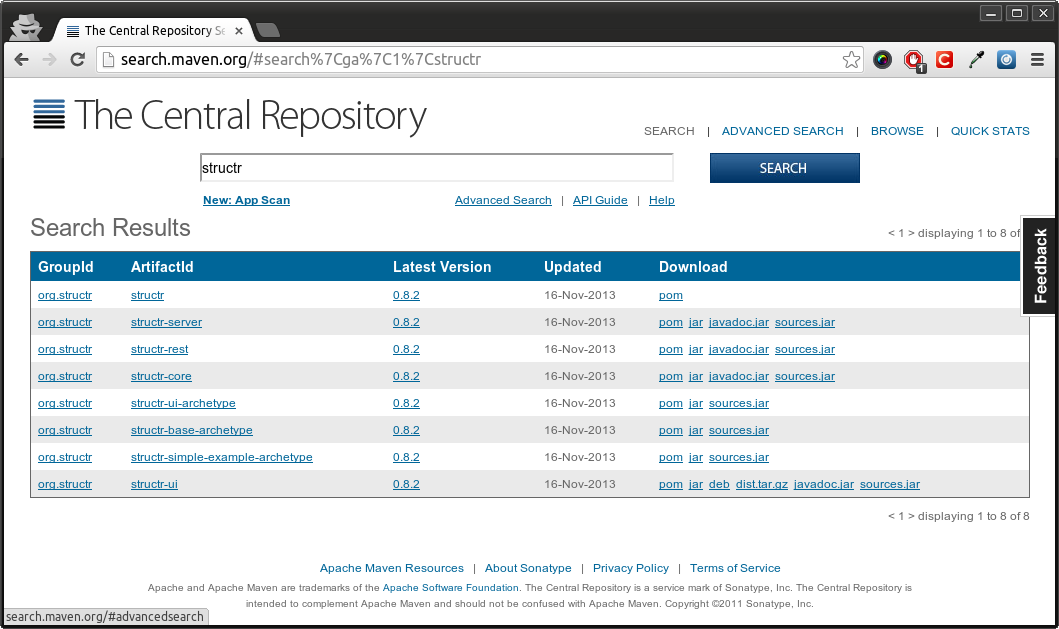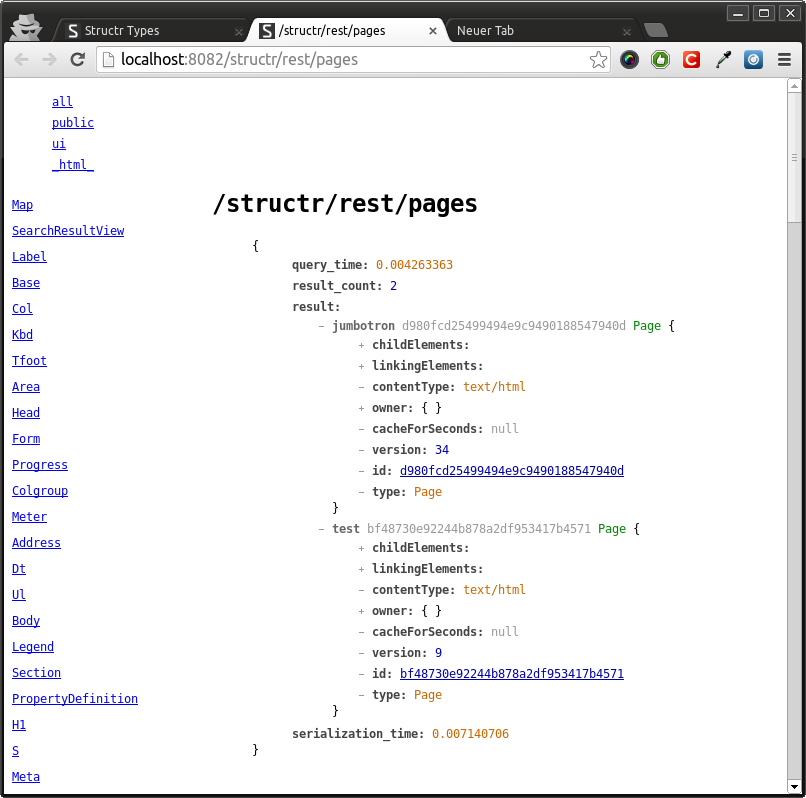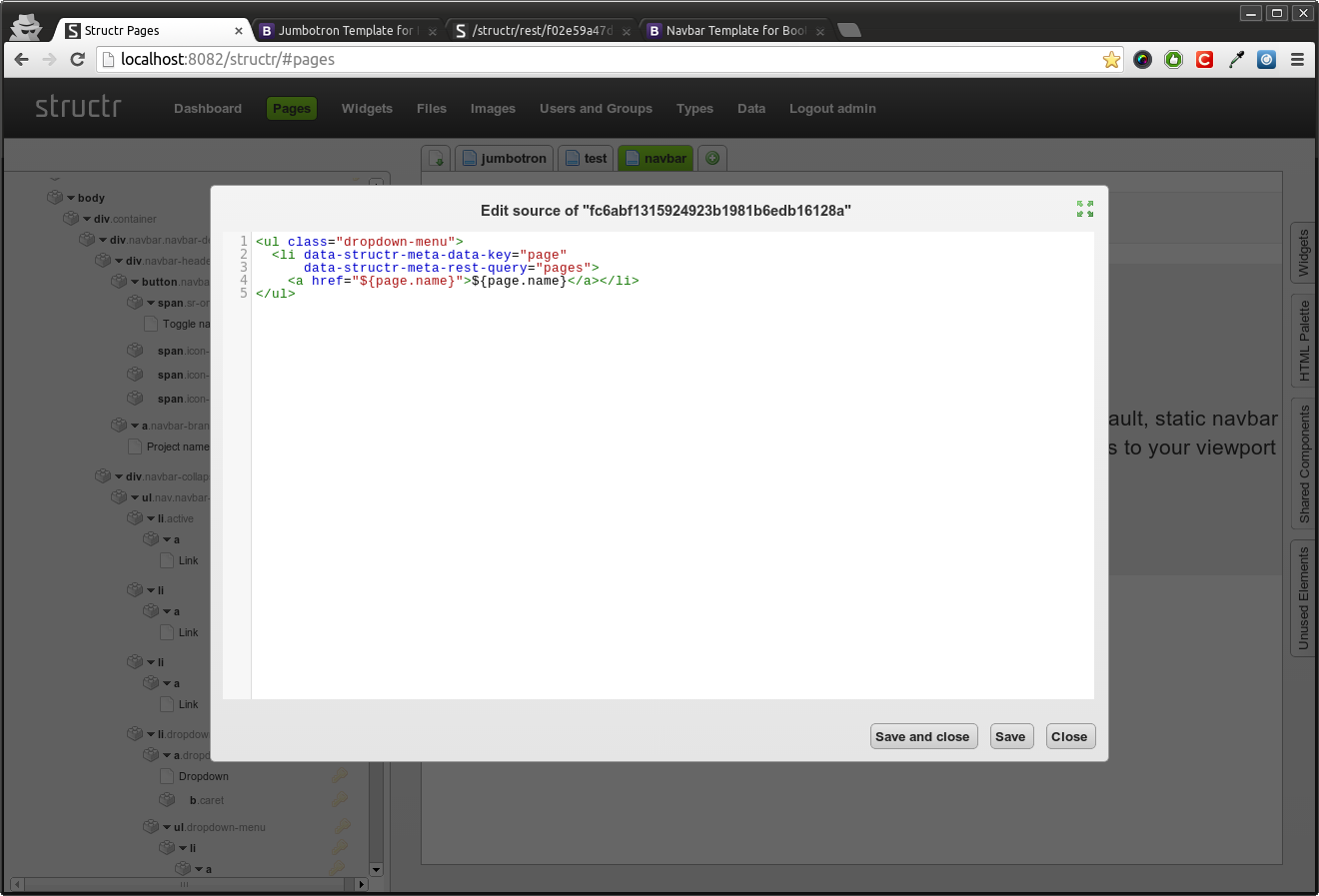Release 0.8.2
We're happy to announce the new release 0.8.2 of Structr! Perhaps it should have been better labeled 0.9, as we included some new features, and it's built on Neo4j 1.9.5.
But until 1.0, it's difficult to find the right version semantics. Starting with 1.0 which will be out this year, we'll use semantic version (http://semver.org/).
Available on Maven Central
Good news for anyone using Structr components in an own project: For the first time, all artifacts are available on maven central: http://search.maven.org/#browse%7C-1851970723

FTP Access to Folders and Files
Besides some bug fixes and general enhancements, we addded an FTP interface. To enable FTP access, just add FtpService to the line of configured services in structr.conf, f.e.
# services
configured.services = NodeService CronService LogService AgentService ModuleService FtpService
and set a port:
# built-in FTP server
application.ftp.port = 8022
REST HTTP Console
When you access a REST endpoint with a browser, there's a simple interactive console to browse and explore the REST API:

Edit Page Branches in Source Mode
You can now edit any node in source mode.
What does that mean?
As all HTML elements in Structr are stored as nodes in the page tree, you normally edit pages by by dragging and dropping nodes around, or edit their attributes and text content.
But there are more and different node properties than just the HTML attributes, like f.e parameters for
- Data binding,
- Locales to show/hide elements on multi-language pages,
- General conditions to include/exclude nodes in rendering process.
Markup including meta data can be exported to a so-called widget by drag'n drop of a node to the widgets area, or - and this is new to 0.8.2 - alternatively edited in source mode:

This feature is still very experimental because right now, on save, the complete subtree will be removed and re-built from the new source code. And as we're using an HTML parser, it does only work with HTML code which is valid as a direct child of the body tag.
But in most cases, when used with prudence, this feature works well and is pretty handy in daily project work.
Next Release
We're quite busy working on the 1.0 release. We're still confident to get it out this year.
But before 1.0, there are some important and breaking changes to the Java backend in the making which are already visible in the develop branch. Stay tuned for another blog post on that topic.
And perhaps see you at GraphConnect London next week?
